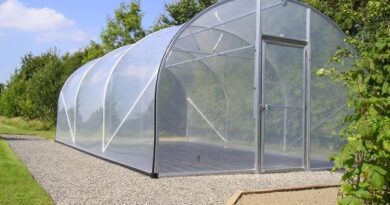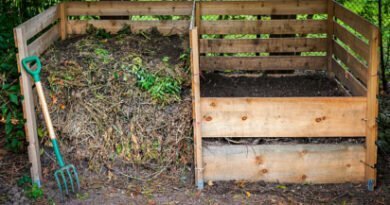April Allotment Tasks: Cultivating Spring Abundance
As the sun climbs higher in the sky and the air fills with the gentle warmth of spring, the hearts of allotment owners beat with excitement and anticipation. For us, April is more than just another month on the calendar—it’s a gateway to a world of boundless possibilities and abundant growth. With each passing day, our plots of land transform into vibrant tapestries of greenery and blooms, a testament to the care and dedication we’ve poured into our gardening endeavors.
April is a month of transformation in the gardening calendar, a time when the groundwork laid in preceding months begins to bear fruit in the form of lush foliage and colorful blossoms. It’s a season of awakening, as dormant seeds burst forth from the earth and tender shoots reach eagerly towards the sun. In this vibrant tapestry of life, every day brings new growth and new discoveries, reminding us of the wondrous cycle of nature that unfolds before our eyes.

In this detailed guide, we embark on a journey through the essential tasks for April, offering guidance and insights to fellow allotment enthusiasts as they navigate the joys and challenges of the gardening season. From soil preparation to seed sowing, from pest management to plant care, we delve into the intricacies of April gardening, sharing our knowledge and experience to help nurture plots into thriving havens of productivity and beauty.
So join us as we explore the wonders of April in the allotment garden, where each day brings new opportunities to connect with nature, cultivate abundance, and revel in the simple joys of gardening. Together, let’s embrace the magic of spring and cultivate our plots into flourishing landscapes that reflect the boundless beauty and potential of the natural world.

Preparing the Soil: April is the perfect time to prepare the soil for planting, ensuring it is nutrient-rich and well-drained to support healthy growth. Begin by removing any weeds and debris, then incorporate organic matter such as compost or well-rotted manure to enrich the soil. Use a fork or tiller to aerate the soil, breaking up any compacted areas and promoting optimal root development for future crops.
Sowing Seeds and Transplanting Seedlings: With the arrival of warmer temperatures, April offers ideal conditions for sowing a wide range of seeds directly into the soil. Hardy vegetables such as carrots, beets, spinach, and peas can be sown outdoors, providing an early start to the growing season. Remember to follow spacing and depth guidelines for each crop and keep the soil consistently moist until germination occurs. For crops that require a head start indoors, April is the time to transplant seedlings grown from seeds sown earlier in the year. Tender plants such as tomatoes and peppers can be safely moved outdoors once the threat of frost has passed. Harden off seedlings gradually by exposing them to outdoor conditions for increasing periods each day before transplanting them into prepared beds or containers.

Tending to Perennials: April is also a busy time for tending to perennial crops such as fruit trees, berries, and herbs. Prune fruit trees to remove dead or diseased branches and promote healthy growth. Check berry bushes for signs of new growth and apply a balanced fertiliser to encourage vigorous fruit production. Divide and transplant overcrowded herbaceous perennials to rejuvenate their growth and maintain healthy plantings.
Pest and Disease Management: Vigilance is key in pest and disease management during April, as emerging growth can attract unwanted visitors. Keep an eye out for early signs of pests such as aphids, slugs, and snails, and take proactive measures to control infestations. Regularly inspect plants for symptoms of disease, such as wilting, discoloration, or fungal growth, and promptly remove affected foliage to prevent the spread.
Watering and Mulching: As temperatures rise and rainfall becomes less reliable, it’s essential to ensure that plants receive an adequate supply of water. Monitor soil moisture levels regularly and water deeply as needed, particularly during dry spells. Apply a layer of organic mulch around plants to retain moisture, suppress weeds, and regulate soil temperature, promoting overall plant health and vitality.

As April unfolds, it heralds the arrival of a new season in the allotment garden—a season brimming with promise, growth, and abundance. For those of us who tend to the earth with care and devotion, April represents a time of great anticipation and excitement, as the fruits of our labor begin to take shape before our eyes.
In the tranquil sanctuary of the allotment garden, careful planning and diligent care are the keystones of success. As we turn our attention to the tasks that lie ahead, we lay the groundwork for a season of bountiful harvests and vibrant blooms. Each action we take, from preparing the soil to sowing seeds and tending to emerging growth, is a step towards realising our vision of a flourishing garden.

By following the essential tasks for April outlined in this guide, allotment owners can set themselves on a path towards a productive and beautiful growing season. With each weed pulled, each seed sown, and each plant nurtured, we sow the seeds of our own piece of paradise—an oasis of greenery and color amidst the hustle and bustle of daily life.
As we immerse ourselves in the rhythms of nature, we savor the simple joys of gardening—the feel of soil between our fingers, the scent of flowers in bloom, the sight of bees buzzing among the blossoms. In the embrace of nature, we find solace, inspiration, and renewal, reconnecting with the earth and ourselves in the process.
So let us embrace the arrival of April in the allotment garden with open arms, welcoming the season of growth and abundance that lies ahead. With patience, perseverance, and a touch of magic, we cultivate our own piece of paradise, nourishing our bodies, minds, and spirits in the process.




